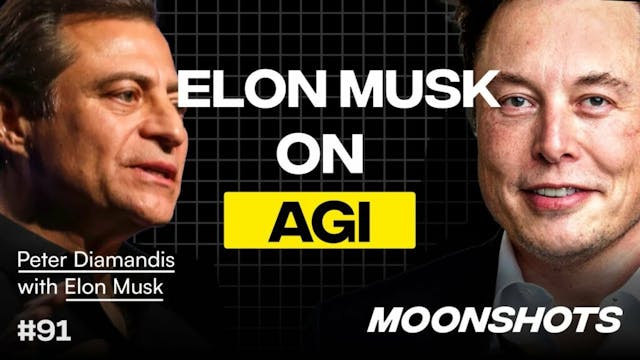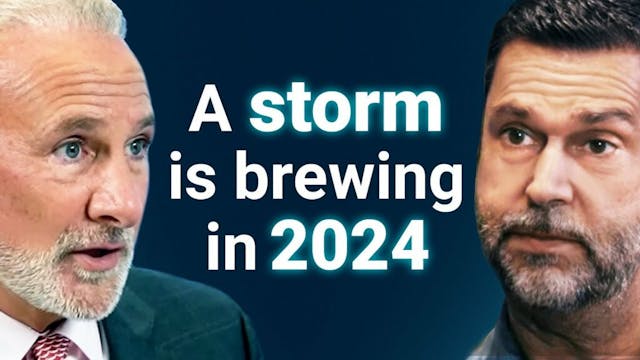
July 30, 2019
Automattic CEO Matt Mullenweg on Building a Fully Distributed Company – Distributed Podcast
Check out the Distributed Podcast Page
Key Takeaways
- Check out the Automattic Creed
- One key line from it reads – “I will communicate as much as possible because it’s the oxygen of a distributed company”
- If you’re working on a remote team, try to meet in person every now and then
- It doesn’t have to be often, but doing so allows allows relationships and trust to quickly be built – this makes it easier to work together more effectively while remote
- Something Matt learned from Ray Dalio’s Principles:
- The comfort that people have with challenging ideas and the openness people have to their ideas being challenged is crucial to getting the best outcome
- On the future of remote work:
- “I believe there’s a window where distributed companies will have a real advantage for recruiting and retention. That window will probably close in 3-5 years when the incumbents embrace this.”
Books and Resources Mentioned
- Matt picked up a few pointers from Ray Dalio in his book, Principles, related to creating an idea meritocracy
- Check out this blog post from Matt detailing what he keeps in his backpack
Products Mentioned
- Matt uses a Sennheiser Culture Series Wideband Headset for voice calls
- Matt uses a Logitech BRIO webcam for video meetings
- Matt prefers to plug his laptop into an ultra-wide monitor while working. He has two:
Intro
- This is Matt Mullenweg’s (@photomatt) new podcast which takes a deep dive into all things remote work
- For more Matt, check out these Podcast Notes from his appearance on the North Star Podcast
- Matt is the creator of WordPress and CEO of Automattic, which is valued at $1 billion+ and has a fully distributed team of 900+ employees around the world
- In this episode, Mark Armstrong (@markarms), the founder of Longreads interviews Matt
- Mark (based in Seattle) and Matt (based in San Francisco) are recording this interview with Zoom
The Day Matt Knew Office Work Wasn’t For Him
- Matt dropped out of college after starting WordPress and moved from Houston to SF in order to take a job with CNET as a product manager
- How did CNET find him?
- Earlier on, Matt made a deal with himself that if he ever hit #1 on Google for the search term “Matt” he would shut down his site and go out on top
- This ended up happening, largely because the main WordPress site included links to the personal blogs of the developers
- CNET caught wind of Matt’s feat and soon reached out
- How did CNET find him?
- At the time (2004), there were no indications that WordPress could ever make money – Matt thought of it as a volunteer project
- Matt built the platform with a remote group of individuals located all around the globe utilizing IRC for work-related chat
- Matt’s first desk at CNET was actually located in a nice corner office, but he was soon moved to the interior of the building
- And it got worse – Matt’s team was eventually moved into the basement with no windows – “That was around the time I started to think this might not be for me”
The Start of Automattic
- At the time, CNET owned a ton of unique domain names (like “calm.com” and “download.com”)
- One of these domains was “online.com”
- Matt made a pitch to CNET to create a version of WordPress that anyone would be able to use, even those without a computer science background – “online.com” would be the domain
- At the time, all the internet giants of the day had “blogging” platforms:
- Yahoo had 360
- AOL had Journals
- Microsoft had Live Space
- Google had Blogger
- CNET, therefore, thought they couldn’t compete and preferred to bet on professional publications instead
- At the time, all the internet giants of the day had “blogging” platforms:
- Matt made a pitch to CNET to create a version of WordPress that anyone would be able to use, even those without a computer science background – “online.com” would be the domain
- One of these domains was “online.com”
- But Matt knew he had to take hold of his idea and make it happen
- Oddly enough, CNET invested – Matt’s vision eventually became Automattic
The Early Days of Automattic
- Matt’s (he was 21 at the time) first Automattic employees were all remote/people who had helped build WordPress (Matt himself stayed with CNET to finish up some projects before gong full-time)
- He paid these first Automattic employees out of his CNET salary
- Matt and his Automattic team originally used AIM and IRC to communicate internally
- (Automattic still runs IRC servers to this day)
- At some point, the team switched to Skype
- In the early days, the Automattic team only had ~3 meetings per year – the majority of communication was written
- Keep in mind, none of the team had met in person yet
- Matt adds:
- “We didn’t plan to raise investment in the beginning… We were making a bit of money, enough where we could each take a modest salary of a few thousand a month. That was the plan. We didn’t have a ton in the bank, but there was enough for a few of us to work on WordPress/Automattic full-time. That was a dream… We were happy as clams.“
Was there ever pressure to get a physical office?
- As background:
- Toni Schneider was instrumental in helping Matt and Automattic raise their first round of fundraising (~$1.1 million led by True Ventures)
- If they needed to meet, Matt and Toni would just use the True Venture’s offices
- “There was no reason to try to move the rest of the company. They were perfectly happy where they were.”
- The model was working, so Matt thought – “Why change it?”
- “There was no reason to try to move the rest of the company. They were perfectly happy where they were.”
- Over time, the tools for remote collaboration improved (and traffic in SF got worse) so the need to provide an office dissipated
The Automattic Culture
- Check out the Automattic Creed
- One key line from it reads – “I will communicate as much as possible because it’s the oxygen of a distributed company”
- In the early days, the were no private conversations within Automattic – everything was open/transparent
- Back then, there were no teams or managers and the whole company used the same chat room
- “There was such an advantage to know everything else that was going on and we were doing few enough things that you could know everything else that was going on.”
- This resulted in a large collective intelligence – people pitched in on every idea
- Another benefit – real-time feedback which sped up the iteration cycle
- Back then, there were no teams or managers and the whole company used the same chat room
P2 | The Foundational Tool for All Automattic Communication
- Matt & Automattic held a few meetups in the early years
- Some went well, others didn’t (they resulted in too much debate/idea exchange without getting anything done)
- This led Matt to restructure how the gatherings were organized – they ultimately became “hack weeks” in which employees would work closely on projects for a brief period of time from start to finish
- One benefit of the meetups – relationships and trust were built which allowed employees to more effectively work together when remote
- Some went well, others didn’t (they resulted in too much debate/idea exchange without getting anything done)
- One of the projects that resulted from a hack week was P2
- This is a WordPress theme introduced in 2008 which allowed internal Automattic groups to share status updates
- Mark sees it as “the foundational tool for all communication inside of Automattic to this day”
- Matt expands:
- It’s sort of used like Twitter/Facebook – you can posts status updates in addition to comments
- On the sidebar there are a variety of widgets that:
- Allow you to search for posts by topic/person/team etc.
- This makes it possible, for example, to go back to X year and see the debate/discussion/thought process surrounding Y decision
- View notes
- View schedules
- View target launch dates/countdown timers
- Allow you to search for posts by topic/person/team etc.
- Eventually, P2 replaced company email
- This is a WordPress theme introduced in 2008 which allowed internal Automattic groups to share status updates
The Current State of Automattic
- They now have 900 employees
- What’s changed since the beginning?
- For the most part, Matt avoided creating any form of hierarchy or company structure until Automattic employed ~60 people (AKA when it started to be necessary)
- Ever since then, they’ve held a normal org chart/hierarchy
- For the most part, Matt avoided creating any form of hierarchy or company structure until Automattic employed ~60 people (AKA when it started to be necessary)
- Automattic now focuses on a structure comprised of various teams, each consisting of 8-10 people
- When a team grows too large, it splits into two – these teams then form the business units
- “But if you zoomed in on one of those teams it’d look very much like the teams we had a decade ago”
- When a team grows too large, it splits into two – these teams then form the business units
- The tools Automattic uses for remote work haven’t changed all that much
What skills are necessary to succeed inside Automattic?
- Being active on P2
- Matt tries to average ~100 posts/comments per month
- Some teams do very little written communication and instead communicate mostly through Zoom
- “The nice thing about Automattic is whatever your work style is, you can generally find a team that matches that”
Lessons from Principles
- One of the key points in the book – “The comfort that people have with challenging ideas and the openness people have to their ideas being challenged is crucial to getting the best outcome.”
- If either is missing, you get subpar results
- Text communication allows for things to be misread – “All the emojis in the world can’t recreate the timbre and tone of voice and all the additional data we get when we’re talking or seeing each other.”
Matt’s Working Environment
- Check out this blog post from Matt detailing what he keeps in his backpack. Items include:
- 15″ grey touchbar MacBook
- Sennheiser Culture Series Wideband Headset which Matt uses for calls
- “Audio quality is far more important than video quality for making a great meeting”
- Imazing 10k charger
- Native Union combo extension cord and USB charger
- When working from home, Matt:
- Always puts a candle on his desk
- Likes the temperature to be a little bit warmer (he’s found that his hands and feet tend to get extremely cold for some odd reason when working)
- Will frequently make hot tea using an instant hot water faucet attached to his sink
- Uses a Logitech BRIO webcam for video meetings
- Matt always keeps a notebook on his desk for taking quick notes
- Matt prefers to plug his laptop into an ultra-wide monitor while working. He has two:
The Future of Remote Work
- “I believe there’s a window where distributed companies will have a real advantage for recruiting and retention. That window will probably close in 3-5 years when the incumbents embrace this.”
- Job seekers will start asking more intelligent questions centered around remote work, such as:
- “Can my career advance as much being remote as it would if I were on-site?”
Additional Notes
- “It’s a resolution of mine to pick up the phone more”
- Early on, customer support emails for Automattic would go to everyone in the company
- Whoever replied first would take over the ticket



